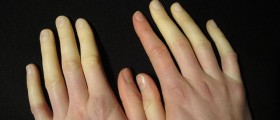
If you are at high altitude, you might be more vulnerable to altitude sickness. This occurs as a result of a lack of oxygen, and leads to symptoms such as headache and loss of appetite. Generally, the sickness happens when those not used to being at high altitude go quickly from low to high altitude. 8,000 feet is considered to be the definition of high altitude. Mild altitude sickness is quite a regularly experienced problem, and about twenty per cent of those who visit the Western mountains of America will suffer from the condition. It is often difficult to tell who will be vulnerable to the condition. Physical fitness and sex has no bearing on the onset of altitude sickness.
About altitude sickness
This condition can be dangerous, and it is advisable to take particular care if you are traveling to places at high altitude. Altitude sickness occurs as a result of the so-called ‘thinner’ air that exists at higher altitudes. If you go too high too fast, your body might be unable to inhale the requisite amount of oxygen. This can lead to headache and other symptoms.
Symptoms
The most regular symptoms of altitude sickness are headache and lack of appetite. Headaches can be severe and throbbing, and are normally worst during the night and upon waking. There might also be vomiting, weakness, lack of energy, dizziness and abnormal sleeping habits. Symptoms can either be mild or severe in nature. They might not become apparent until a day after exposure to high altitude. Many of those who suffer from the condition compare it similarly to the feeling of having a hangover. The sickness can affect the brain and the lungs. If this occurs, one might feel confused and faint. One might also suffer from ataxia, as well as blue or gray lips or fingernails. During breathing, if you hear a ‘crumpling bag’ sound, it might indicate that the problem is severe, or even deadly.
Treatment
It may sound obvious, but the best way to address altitude sickness is to move to a lower altitude. If you have only mild symptoms, it might be enough to allow your body to get used to the altitude by remaining there for a period of time. A specially designed pressure chamber or the use of an oxygen mask might be required in order to treat some levels of altitude sickness. It is also important to get enough rest when at high altitudes.

















Your thoughts on this
Loading...